Phoenix Bathroom Cabinets: Are bathroom cabinets waterproof?
Why Waterproofing Matters for Phoenix Bathroom Cabinets Phoenix bathroom cabinets
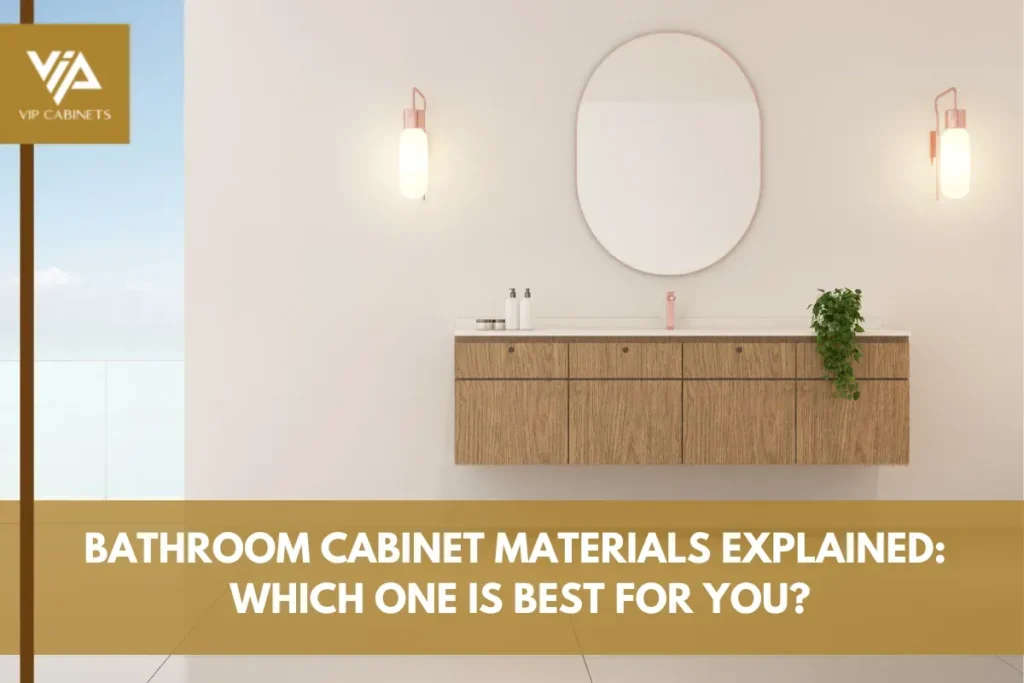
Picking the right bathroom cabinets isn’t just about choosing a style or color—it’s also about selecting the best material. Bathrooms get wet, humid, and messy. So, your cabinets need to be tough, moisture-resistant, and built to last. But with so many materials out there, how do you choose the right one?
Let’s explore the most popular materials used for bathroom cabinets and help you decide which one fits your budget, space, and style.
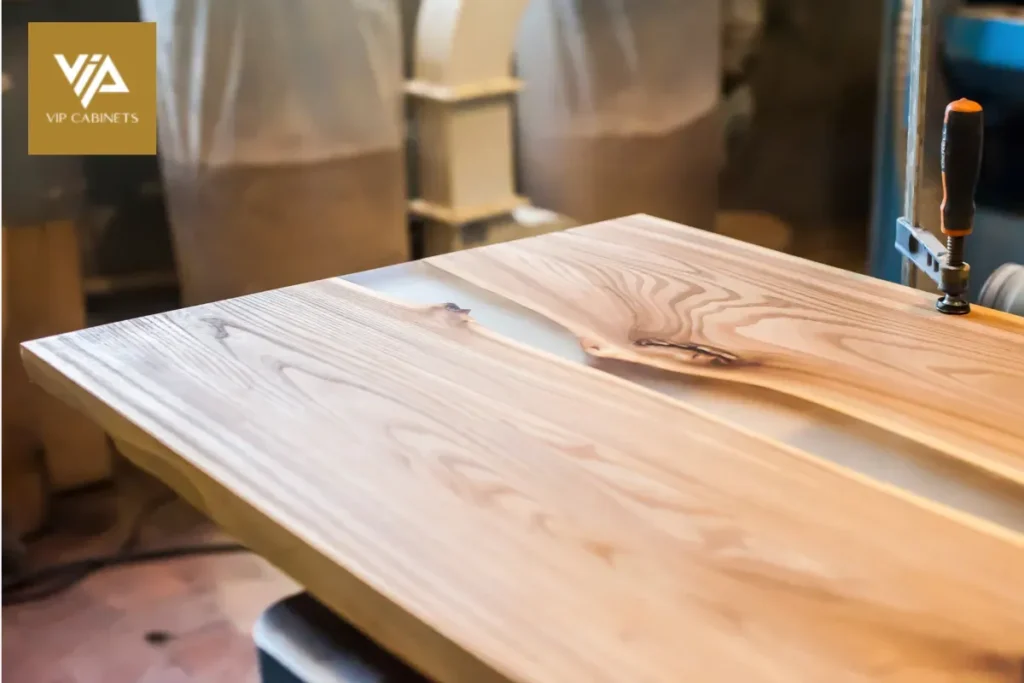
Solid wood is exactly what it sounds like—real wood all the way through. It’s often made from hardwoods like oak, maple, or birch.
If you’re going for a high-end look or want your bathroom vanity to feel like a piece of furniture, solid wood is a great pick.
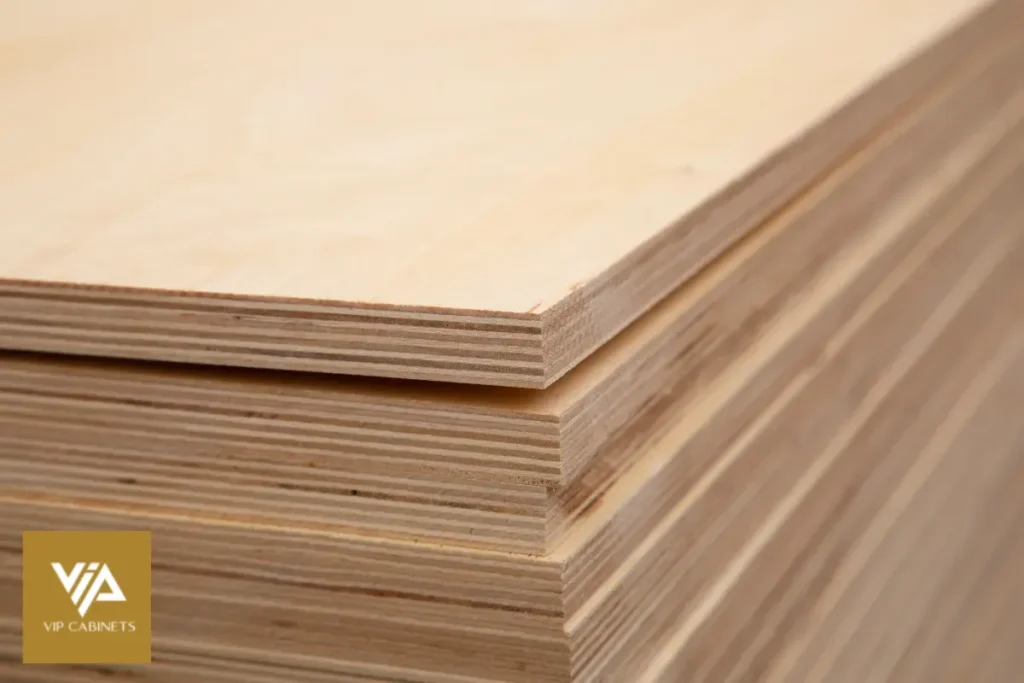
Plywood is made from thin layers of wood glued together. It’s super sturdy and resists moisture better than solid wood in some cases.
If you want strength, durability, and moisture resistance, plywood bathroom cabinets are a smart investment.
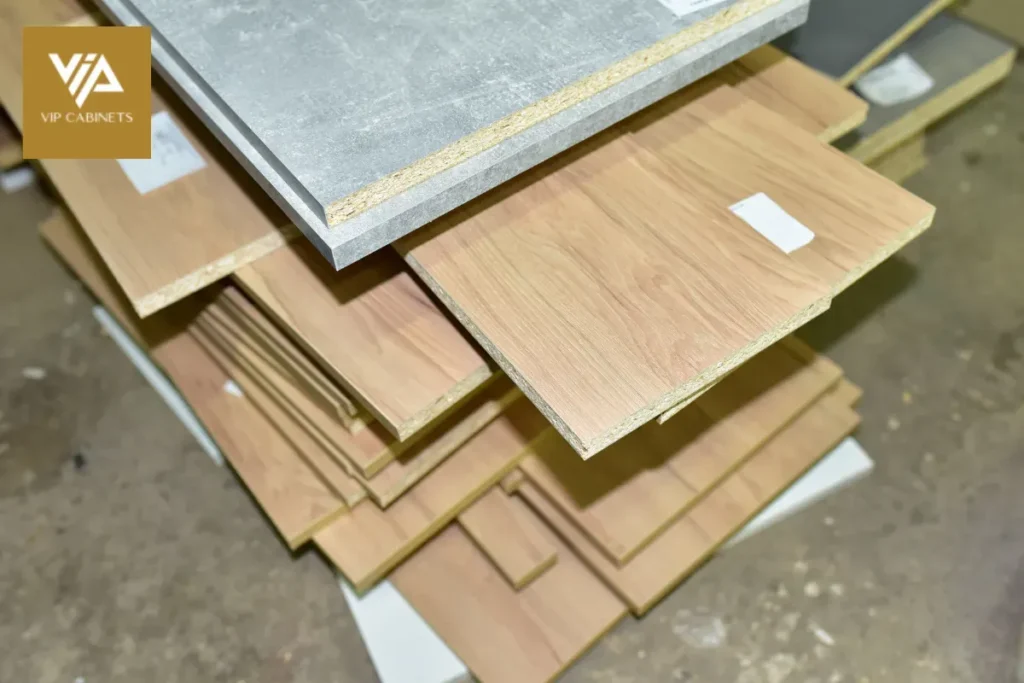
MDF is an engineered wood product made by pressing wood fibers and resin together. It’s smooth, easy to paint, and very common in modern bathroom cabinets.
MDF works well in low-humidity bathrooms or for homeowners who love modern designs with a smooth, sleek finish.
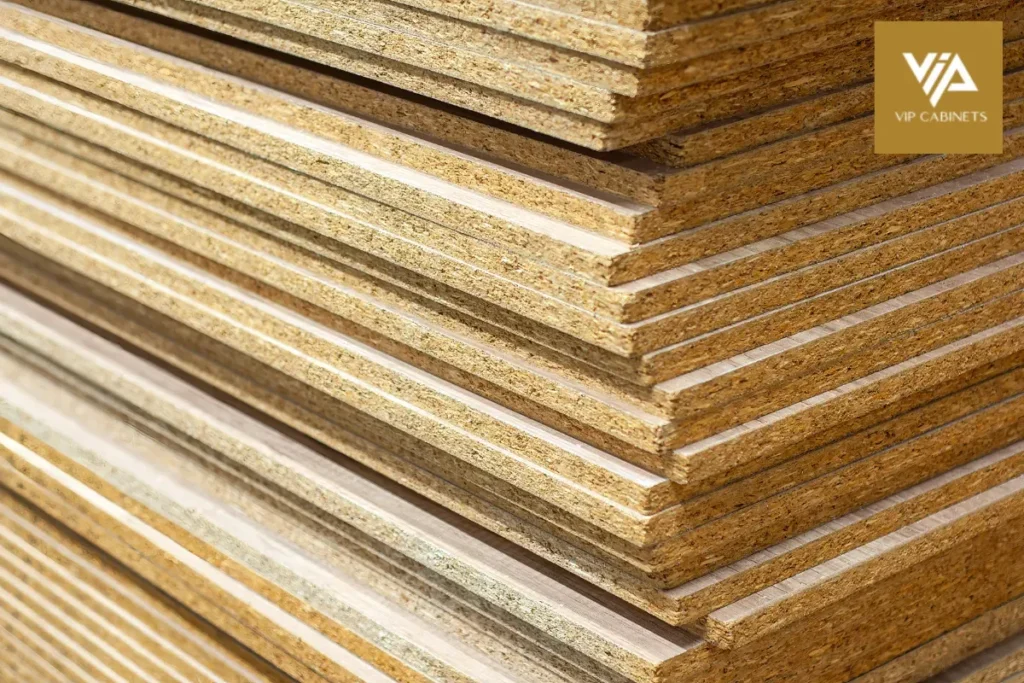
Particleboard is made from small wood chips pressed together. It’s used in many inexpensive or pre-assembled cabinets.
If you’re flipping a house or doing a temporary remodel, particleboard bathroom cabinets may be okay. Just don’t expect them to last forever—especially in damp spaces.
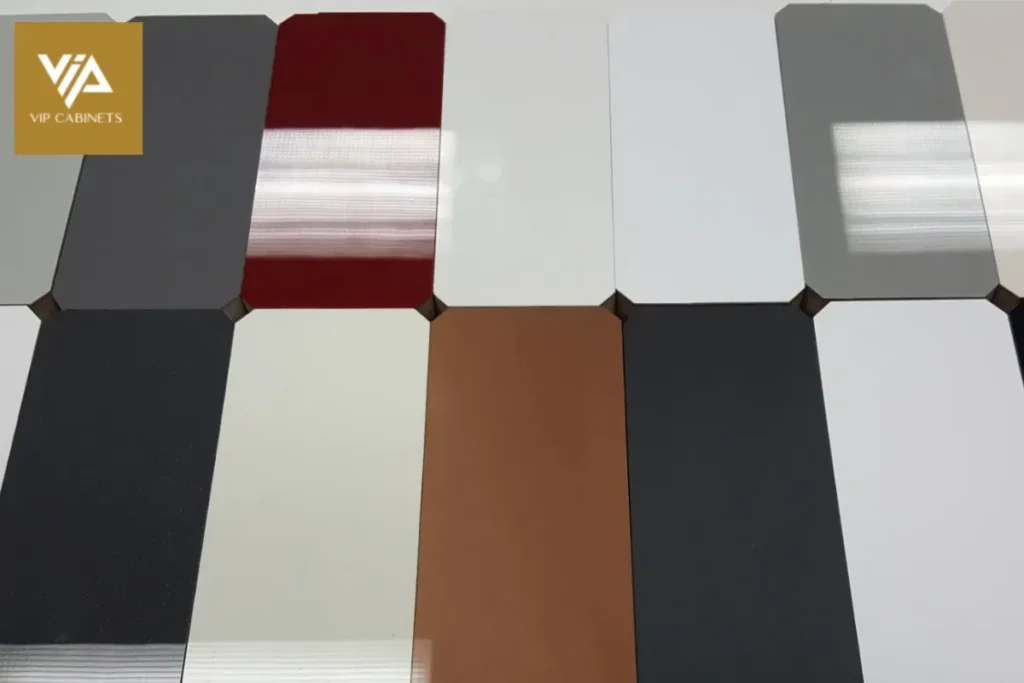
PVC (plastic-based material) and thermofoil (a vinyl-like cover over MDF) are popular in modern bathroom cabinets where water resistance is key.
If you want no-fuss bathroom cabinet storage that won’t get damaged by water, PVC or thermofoil is a practical option.
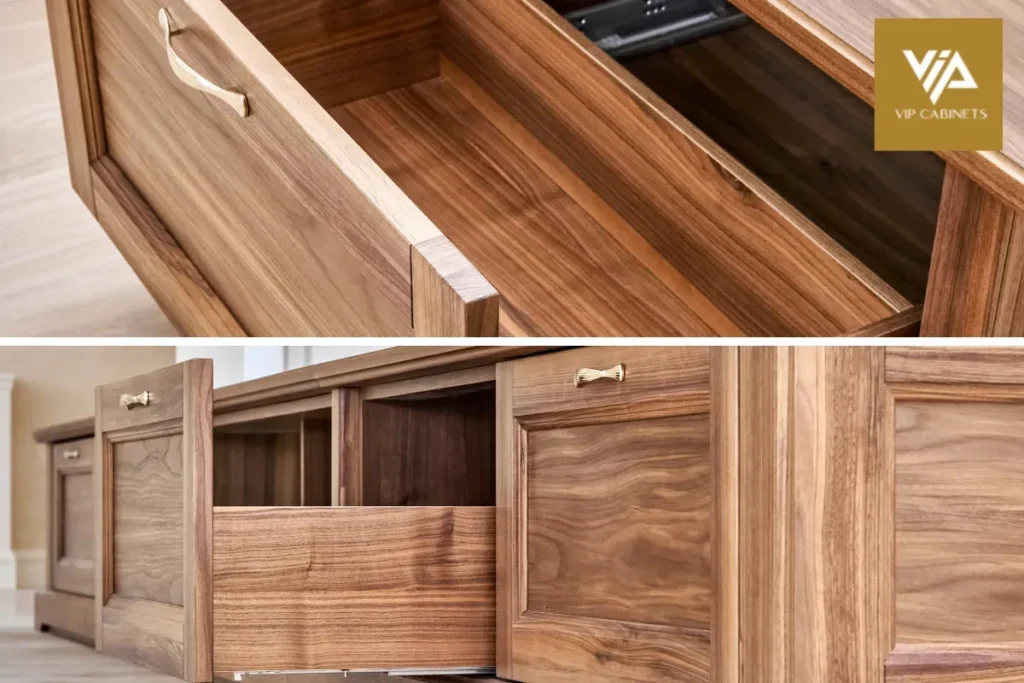
Veneer cabinets are made by attaching a thin slice of real wood to a base of MDF or plywood.
This is a great middle-ground choice if you want a wood look but don’t want the full price tag of hardwood cabinets.
Here’s what to consider when picking the best material for your bathroom vanity:
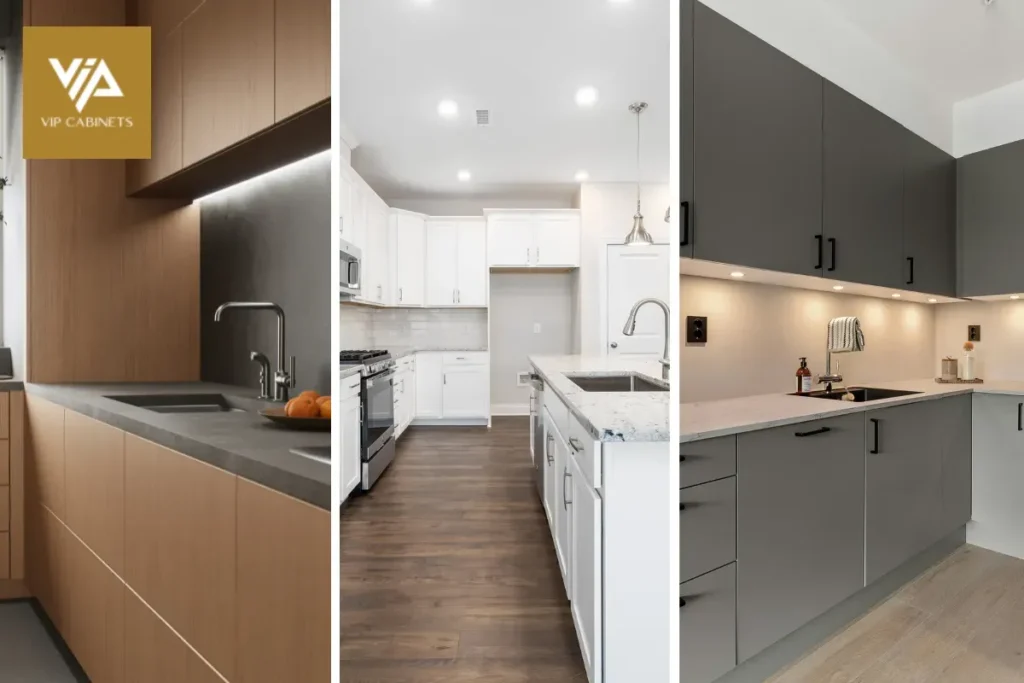
Did you know that many bathroom vanities use more than one material? For example:
This gives you the best of all worlds: strength, value, and style. So don’t be afraid to ask your cabinet store or contractor about mixed-material options when shopping for your next vanity.
Choosing the right material for your bathroom cabinets isn’t just about looks—it’s about getting durability, value, and peace of mind. Whether you want a high-end custom-built vanity, a moisture-resistant cabinet for a kids’ bath, or a quick and affordable update, the material you pick matters.
With so many great choices—like solid wood, plywood, MDF, PVC, and veneer—there’s a perfect match for every bathroom and budget. Take your time, think about how your space is used, and you’ll find the perfect material for a beautiful, long-lasting cabinet.
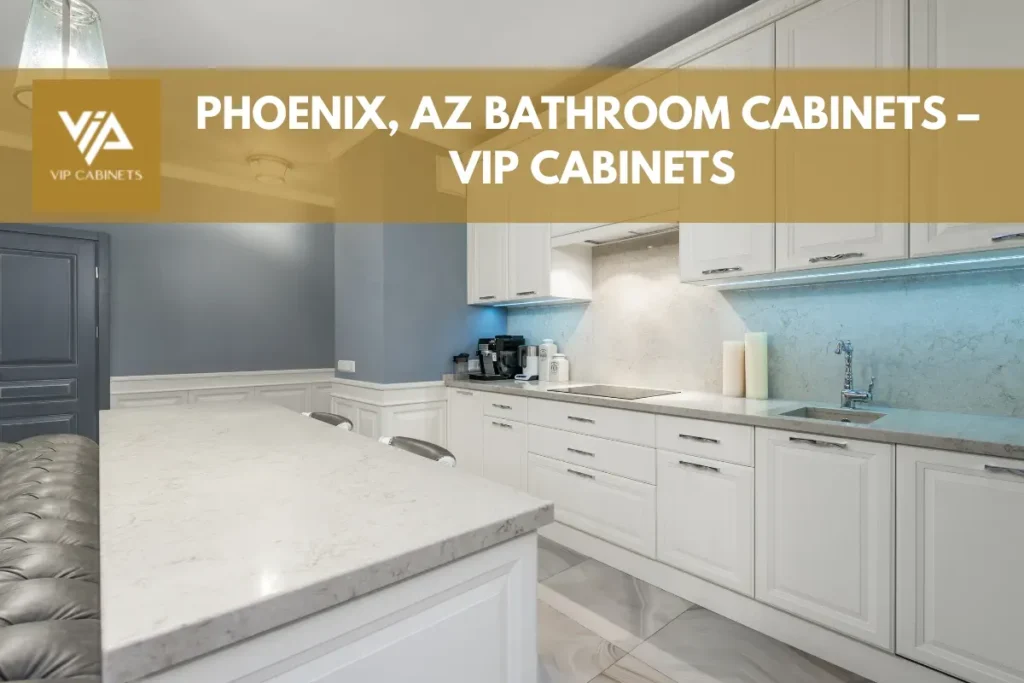
Choosing the right bathroom cabinet materials can feel overwhelming—but not when you shop with VIP Cabinets in Phoenix, AZ. Whether you’re looking for the classic beauty of solid wood cabinets, the water resistance of plywood, or the sleek design of laminate finishes, we help you find the perfect match for your home, budget, and bathroom space. Our experts walk you through the pros and cons of each option—from PVC cabinets for high-moisture areas to custom vanities made for unique layouts.
At VIP Cabinets, we offer a wide range of styles, colors, and durable materials so your bathroom isn’t just functional—it’s stunning. With expert guidance, quality craftsmanship, and a commitment to long-term value, we make cabinet shopping easy and enjoyable.
Call us today at (602) 428-4840 or visit our Phoenix showroom to start designing your dream bathroom with the perfect cabinets for your lifestyle.
The best material for a bathroom cabinet depends on your budget, bathroom size, and how much moisture the room sees daily. However, plywood cabinets are often considered the most reliable option. They offer:
Solid wood bathroom cabinets are a popular choice for their natural warmth and classic appeal, but they require more maintenance. MDF cabinets provide a smooth surface and are ideal for painted finishes, especially in dry environments or guest bathrooms.
If budget is your top concern, particle board vanities are the cheapest option, but they are not recommended for damp areas. PVC cabinets and laminate finishes are easy to clean, water-resistant, and a practical choice for busy bathrooms.
For a perfect bathroom cabinet, look for materials that offer the right balance between cost, durability, and aesthetic appeal for your specific needs.
When it comes to durable materials for bathroom cabinetry, plywood takes the top spot. It’s constructed from layers of wood veneers, making it resistant to warping and swelling. Here’s why plywood is an ideal choice:
Another durable option is marine-grade plywood, which provides enhanced resistance to bathroom humidity and is ideal for custom projects.
Solid wood cabinets are strong and long-lasting but can be affected by bathroom moisture if not sealed properly. Laminate cabinets, especially high-pressure laminates, are also durable and scratch-resistant, making them a cost-effective alternative for long-term use.
If you’re prioritizing long-term value, choose materials with structural integrity, a water-resistant finish, and minimal upkeep—perfect for both modern and traditional bathroom designs.
The best material for a bathroom vanity unit should balance durability, looks, and resistance to water. Solid wood vanities are a timeless choice, offering warmth, strength, and charm. However, they require proper sealing and may not be ideal for humid bathrooms.
Plywood vanities are often the perfect choice for homeowners looking for strength, affordability, and moisture resistance. They’re great for custom vanities and can support a wide range of vanity top materials like white marble, quartz, or granite.
MDF vanities provide a smooth finish that works well with painted contemporary designs, while PVC and laminate finishes are best for low-maintenance, budget-friendly solutions.
For a functional space with ample storage, consider combining a plywood base with MDF cabinet panels and a water-resistant top. This layered approach delivers both performance and aesthetic appeal.
For a bathroom closet, you’ll want a material that can handle moisture while keeping your storage space strong and stylish. Here are the best options:
Avoid particle board in closets near showers or tubs, as it can absorb moisture and lose its shape. For long-term use, choose materials for bathroom cabinets that match both your design preferences and your home’s climate.
Caring for your bathroom cabinets keeps them looking new and extends their life. Here’s how to maintain different materials:
Solid wood:
Plywood cabinets:
MDF cabinets:
Laminate cabinets:
PVC cabinets:
Regular upkeep and using proper care products keep your bathroom cabinetry looking beautiful while preventing water spots and stains.
Yes, certain materials for bathroom cabinets are better suited to either smaller bathrooms or larger spaces based on their structure, design flexibility, and moisture resistance.
For small bathrooms:
For larger bathrooms:
In both cases, choosing materials that match your design preferences and withstand your bathroom’s humidity level helps create a functional space without compromising aesthetic appeal.
Sustainable materials are transforming how homeowners and designers think about bathroom cabinets. They reduce environmental impact while still delivering durable materials and style.
Popular eco-friendly options include:
Using these materials helps conserve resources, minimize waste, and promote a healthier home. Many are now available in a wide range of styles and finishes, making sustainability an attractive option for both contemporary designs and classic bathrooms.
Choosing sustainable cabinet materials means you’re not just creating a dream bathroom, but also supporting a greener planet.
Different cabinet materials require specific maintenance to protect their structural integrity and keep them looking fresh.
Solid wood cabinets:
Plywood cabinets:
MDF cabinets:
Laminate cabinets:
PVC cabinets:
By following proper care instructions for each type of cabinet, you’ll enjoy better long-term value, fewer repairs, and cabinets that match your personal style for years to come.
The best bathroom vanity material depends on your priorities—durability, appearance, or affordability. Here’s a breakdown:
Your bathroom space, climate, and daily routine should guide your choice. Whether you’re building a custom vanity or choosing from pre-made options, consider how each material will perform in your unique bathroom environment.
Caring for your bathroom vanity isn’t complicated, but regular upkeep ensures your materials stay strong and beautiful.
Tips for all vanity materials:
For glossy finishes like laminate, use glass cleaner for extra shine. For natural materials like wood, consider using oil-based polish for lasting aesthetic appeal.
Whether your vanity is made of plywood, PVC, or solid wood, consistent care will extend its life, keep it stylish, and protect your investment.
Read: Top 10 Bathroom Cabinet Designs for Modern and Traditional Homes
Why Waterproofing Matters for Phoenix Bathroom Cabinets Phoenix bathroom cabinets
Discover the Best Materials for Bathroom Cabinetry in Phoenix, Arizona
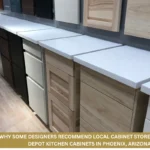
Local vs. Chain: Understanding the Real Value Behind Every Cabinet
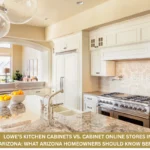
Choosing the Right Kitchen Cabinets in Phoenix Planning a kitchen
Finding the perfect corner cabinet online in Phoenix doesn’t have
If you’re looking for a Phoenix cabinet online, you’re not
If you’re wondering whether you can buy a Phoenix cabinet
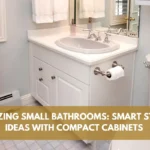
Having a small bathroom doesn’t mean you have to deal

Welcome to Phoenix, Arizona—where sunshine, adventure, and vibrant culture come

If you’re thinking about updating your kitchen cabinets in 2025,